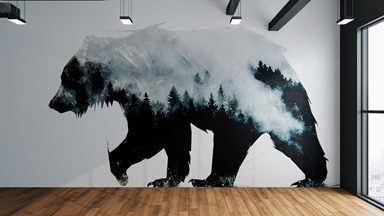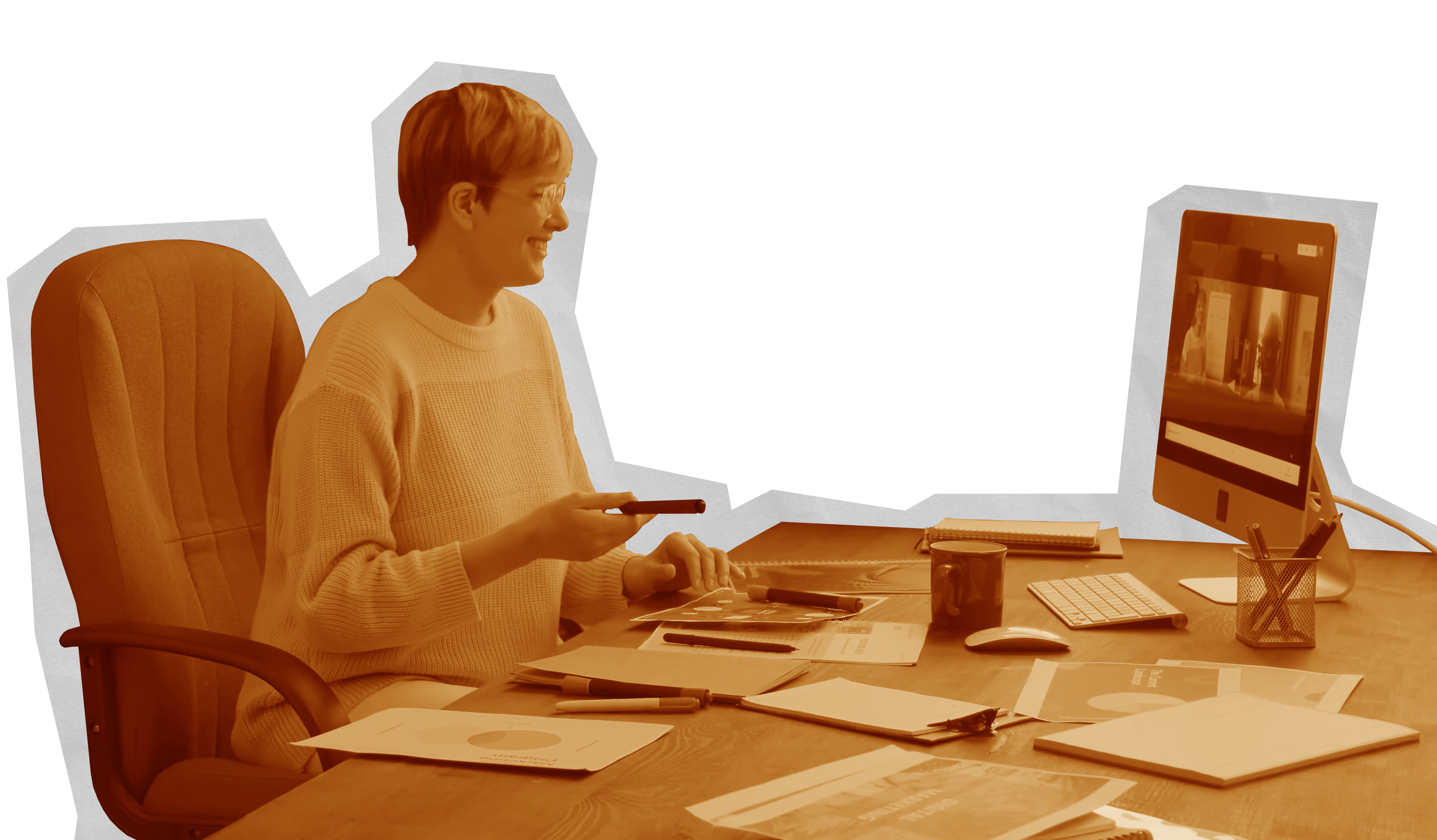Remote Culture
Keeping an engaged, professional work culture in the remote and hybrid work era

Honey, where is the remote (culture)?
As we head into a new post-pandemic work world in 2023, many organizations are bringing their personnel back to the office. But hybrid and remote work is here to stay for the business world and the government. Nearly every company able to operate remotely chose to do so, shifting personnel from office space downtown to “office space” in a corner of the home. According to Global Workplace Analytics and Owl Labs’ widely distributed 2021 State of Remote Work report, nearly 70 percent of full-time U.S. workers have worked remotely. Of those that worked from home during the pandemic, Owl Labs notes that 73 percent have returned to the office at least one day a week. Even just three years ago, such a work dynamic with even partial remote work would have been unthinkable to most companies.
But with this new paradigm come many questions. What do we gain from this remote world? What do we lose? Do our remote routines promote good work habits, professionalism, and a strong culture? Are we now at risk of always being on the clock? How do we compartmentalize our lives when the chair you sit in poring over spreadsheets is the same chair you sit in to watch the latest “Saturday Night Live” clip your mother-in-law shared with you? Are workers and employers really better off at home with pets, family, or a full pantry with those amazing new Cheez-It Snap’d chips than in the dedicated office space?
Company culture has always been a source of pride for businesses, a pillar of uniqueness and character. Whether it’s an annual holiday party, the camaraderie between colleagues, or general work ethic, each company has certain expectations of you as soon as you walk in its doors. But what happens to that culture when the entire workforce no longer walks through those doors every day? What happens when the “work” space and the “play” space meld into one? In these days of “quiet quitting” and “doomed” hybrid work, how can we preserve a strong remote work environment—one that enhances company culture and keeps employees happy and engaged?
All work and no play make Jack a dull boy.
The in-person world of the past delineated our work lives and our personal lives. Turn on your thinking cap as you enter the office because it’s time to work. Turn off your thinking cap as you exit the office because it’s time to grab a bite for lunch. Turn on your thinking cap because it’s time for your 2 o’clock client meeting. Turn off your thinking cap and kick up your feet with a mini umbrella-laden beverage in hand because you’re home. You knew when one life ended and the other began.
Now, we no longer have those separate places to help us define these parts of our lives. Work tasks and meetings bleed into traditional lunch hours. That sandwich and those Cheez-It Snap’d chips at your desk while you knock out emails is standard protocol. Workdays extend long into the evening. You haven’t moved from your chair since lunch and you’re not hungry enough quite yet to get up, so you may as well take a look at those reports. The lines of communication are always open, and your thinking cap is never off. According to the 2021 State of Remote Work, 55 percent say they put in more hours working remotely than at the physical office.
So how can we recapture our “playtime” when “worktime” dominates our space? Or, rather, what strategies can we use to organize our head space better to the benefit of both?
- Use physical or mental cues to determine your work zone. If you have a dedicated office space (a room, basement, or special chair), only do work when you are in that space. Calls, emails, and strategy can wait until you return to that space after lunch or the next morning. If your office space is the one corner of the kitchen counter that doesn’t have junk all over it, then establish a specific action that brings you mentally into the workspace. It could be setting up your workstation, a habitual action such as checking emails, or even a mantra. Conversely, breaking down your workstation, logging out of email, or a dedicated “see you tomorrow” IM to your colleague could help bring you out of the work mentality for the evening.
- Set your status. Most office chat applications, such as Microsoft Teams, give you the ability to set a visible status as online, busy, or offline. Use these statuses to your advantage to let colleagues, supervisors, and clients know when you are and aren’t available. Set that status to “busy” when you are taking your lunch break. Set it to “offline” when you are done for the day. It’s one simple, non-verbal method to communicate your “work” versus “play” mindset in the moment.
- Respect core work hours. Just as you hope nobody bothers you as you log off for the day, you should give the same courtesy to your colleagues. Avoid sending out late emails or phone calls and wait until the next day to send your own replies. Colleagues and companies can reinforce this tenet and set strict schedules to create a culture that supports clear lines between work and leisure hours.
Carving out downtime is difficult when the need to be “on” pervades remote work culture. Find your own ways to break apart your “work” space and your “play” space and avoid being a “dull boy.”
Home Sweet Home

Remote work culture isn’t all doom and gloom, turning us into zombies who can’t take a break. In fact, working from home has provided numerous benefits to employees, companies, and clients alike. As much as the “work” space can dominate the “play” space to the detriment of the latter, the “play” space can also bring benefits to the former.
For starters, the daily commute has been drastically shortened from an hour sitting in traffic to a minute’s crawl from the bedroom. This boon to leisure time has the dual effect of decreasing transportation costs (gas for employees, transportation benefits for employers) and increasing productivity. Clients in turn receive refreshed personnel who are more prepared to meet the responsibilities of the day.
Furthermore, self-soothing and self-care mechanisms available at home help to cope with the stress of the workday. Just finished a task and need to decompress for 15 minutes before jumping onto the next project? Pull out your guitar and jam for a bit. Trying to stick to your New Year’s diet or exercise plan? Use that hour for lunch to hit the gym in your apartment building or make a complete nutritious meal that doesn’t include cheesy crackers. It’s hard enough to keep a kale salad fresh in the office fridge, let alone protect it from light-fingered colleagues.
Many managers worry that employees get so comfortable at home that productivity and professionalism decrease. But working from home is no longer a novelty, with children scooting in during meetings or John from Accounting in a towel. Remote work is productive work. According to an study about employees’ work arrangements and attitudes toward remote work, people who worked remotely at least some of the time reported being about 9 percent more efficient working from home than they were working from the office in April 2022. That’s up from 5 percent in the summer of 2020 when many companies were still finding their feet.
We still need to maintain standards of professionalism by logging in to meetings promptly, sticking to work hours, and looking presentable in front of the webcam, but the company that promotes having a safe space and a dependable routine―personalized beyond what an office typically allows―tends to produce employees who relish rather than dread logging on in the morning.
Formal Informality
Remote culture has also accelerated the phenomenon that we call “formal informality.” As companies try to balance competing social forces, elements of the “play” space influence those of the “work” space. Take a look at the latest websites for top consulting firms or private companies and you may notice an air of levity on them. Humor has begun to creep back into even formal communications and branding. Casual attire has become the norm for employees as they work from home. Of course, there is a standard of decorum that should be maintained (we’ve all worked in our pajamas at some point), but a professional, comfy style has become widely accepted from leadership on down. We might chuckle at someone jumping on the morning meeting in a three-piece suit, or raise eyebrows at a stained tank tank top. But a knit cardigan over a T-shirt doesn’t get a second glance. Our “play” outfits have become “work” outfits, bringing coziness to our workstations, allowing people to work in their own style, and translating comfort and confidence to our communications.
 Other aspects of the “play” space make surprise appearances throughout our workday, always seeming to know exactly when it’s your turn to speak on the company all-call. Whiskers takes a leisurely stroll across your keyboard as you try to explain the latest charts or Fido yaps in the background of your proposal presentation. All these human vignettes have become relatable moments of the remote work culture, experiences that every person can relate to or lived only yesterday.
Other aspects of the “play” space make surprise appearances throughout our workday, always seeming to know exactly when it’s your turn to speak on the company all-call. Whiskers takes a leisurely stroll across your keyboard as you try to explain the latest charts or Fido yaps in the background of your proposal presentation. All these human vignettes have become relatable moments of the remote work culture, experiences that every person can relate to or lived only yesterday.
As we gaze at colleagues and clients on “The Brady Bunch” setup of screens in front of us, we catch glimpses of humanity. We are privy to a small window into someone’s life: the family photo on the wall, the book collection on the shelf. At the same time, we all don’t work from beautifully curated home offices. Sometimes we work near stacks of dishes in our sink or Cheez-It Snap’d cheddar dust on our table. To accompany our website redesign, Breck designed a striking series of virtual desktops for our employees. This helps us have the best of both worlds—we can leave our cameras on to capture more complete human interaction, but can nicely conceal our clutter.
Trust and Routine
Breck was effectively a remote company long before it was the hip thing to do. As the world pushed into uncharted territory, Breck acted as the veteran recon scout, hardened by years on the frontier of remote work. We had leadership in Denver, a manager in Kansas City, and junior personnel in Arlington. We communicated across time zones and across projects effectively. The very nature of our business structure positioned us to excel in the environment created by the COVID-19 pandemic and address its challenges with innovation.
Where many companies tackled remote culture by employing more micromanagement, Breck has used its experience to break the mold and instill confidence and independence in its employees and processes. Promoting trust, self-motivation, and accountability may be the most powerful means to establish positive company culture in the remote world. After all, although Breck is a small business, the president isn’t going to poke her head into your office from across the country; it’s up to you to stay on target and deliver.
To this end, Breck developed (and keeps improving upon) standard routines to keep the operation running smoothly and erase the need for hawkish oversight in a remote environment. Dedicated morning login messages for contract personnel and procedures for opening communications portals have ensured consistent engagement from employees and helped bring them into the workday mindset. A focus on good administrative hygiene in planning meetings, providing materials, and archiving information kept remote communications tidy. Structured follow-up communications replaced the post-meeting coffee chat that was customary in the office setting. Developing the muscle memory of the routine tasks has enabled Breck staff to advance corporate and client goals and maintain high standards, all while avoiding the needling of constant supervision.
Breck Bursting Bubbles
Breck’s experience in the remote world also allowed it to tackle the challenge of connection (or lack thereof) across the company. As the world created bubbles and pods of family and friends to keep themselves safe from the virus, so too did bubbles manifest in the workplace. Employees, especially those hired in the middle of the pandemic, may not know each other. They are isolated in their team or contract and have little to no contact with other areas of the company. How can you develop a unified company culture if the branches don’t interact?
Breck is leading measures to bring employees closer together even while apart. Staff meetings have become regular additions to the week, allowing teams to gain visibility into each other’s projects and providing opportunities for coworkers to shoot the breeze (a moment of “play” in the middle of the “work” space). We also foster cross-team collaboration, often combining creative experts, writers, and project managers into “tiger teams” to address immediate critical needs of the client or Breck corporate projects.
As employees onboard and become acquainted with the various facets of Breck, we encourage data calls to meet colleagues and gain greater understanding of different projects and contracts. Breck also is currently developing an intranet resource to support improved communication and coordination between teams. Although we at Breck benefit from being a small company with lots of opportunity to interface with each other, larger companies can look to deploy similar strategies to burst the bubbles created by remote work and find opportunities to foster community in their ranks.

A (re)Mote of Thought
Your basic company culture is not going to fly out the window just because you’ve moved to a remote regimen. Especially for established companies, your values are ingrained in your leadership and in the very fiber of your work.
But have the conversation. A discussion on your remote culture can lead to identification of areas that are slipping through the cracks. How are you addressing the inherent melding of the “work” and “play” spaces? Are you fostering a culture that helps employees to separate the two? Are you leveraging the benefits the home has to offer to the “work” space? Are you leaning into the trend of informality that brings personality and humanity back into our corporate communications? Are you bursting bubbles and building routines and trust into your operations?
